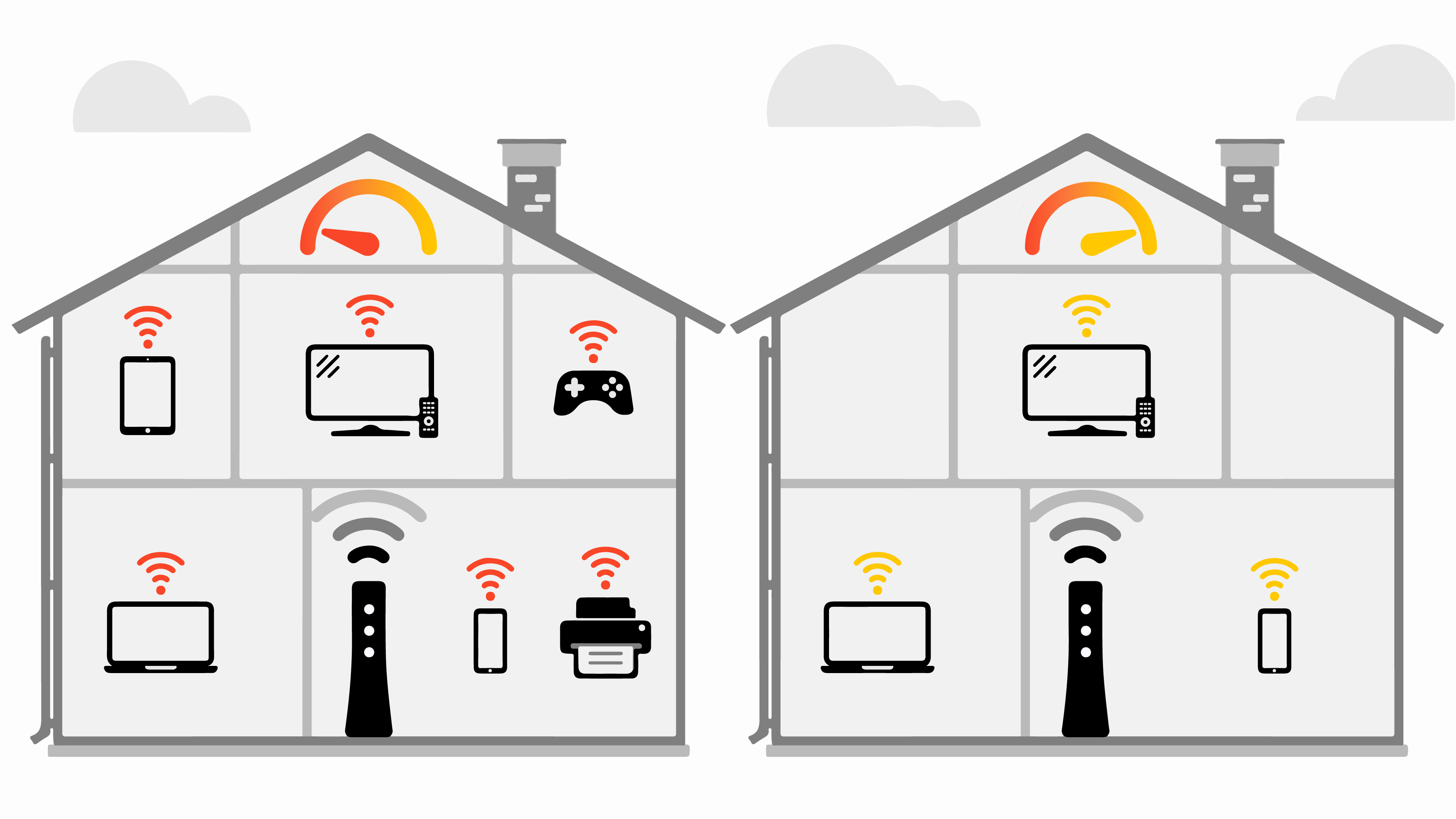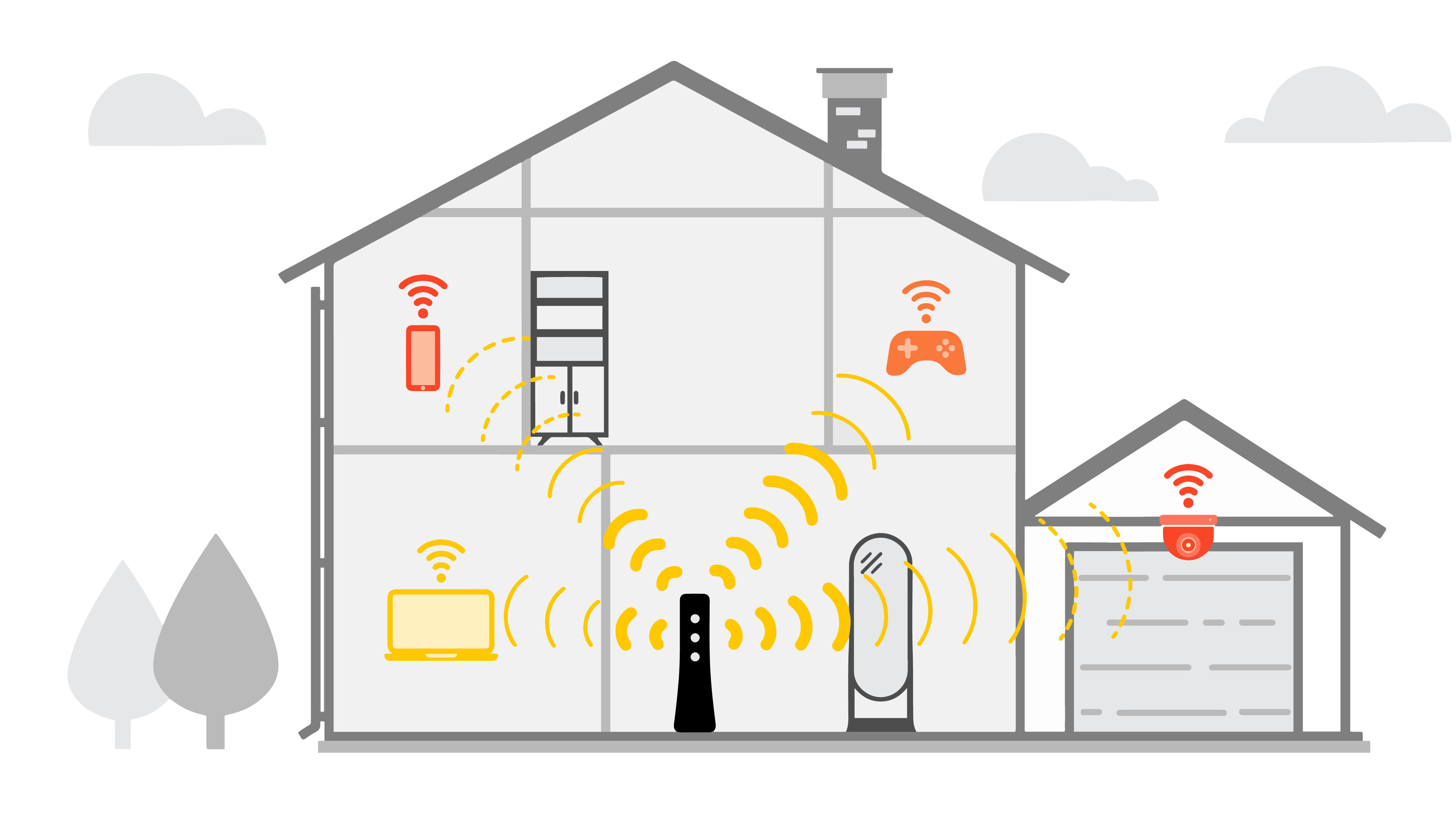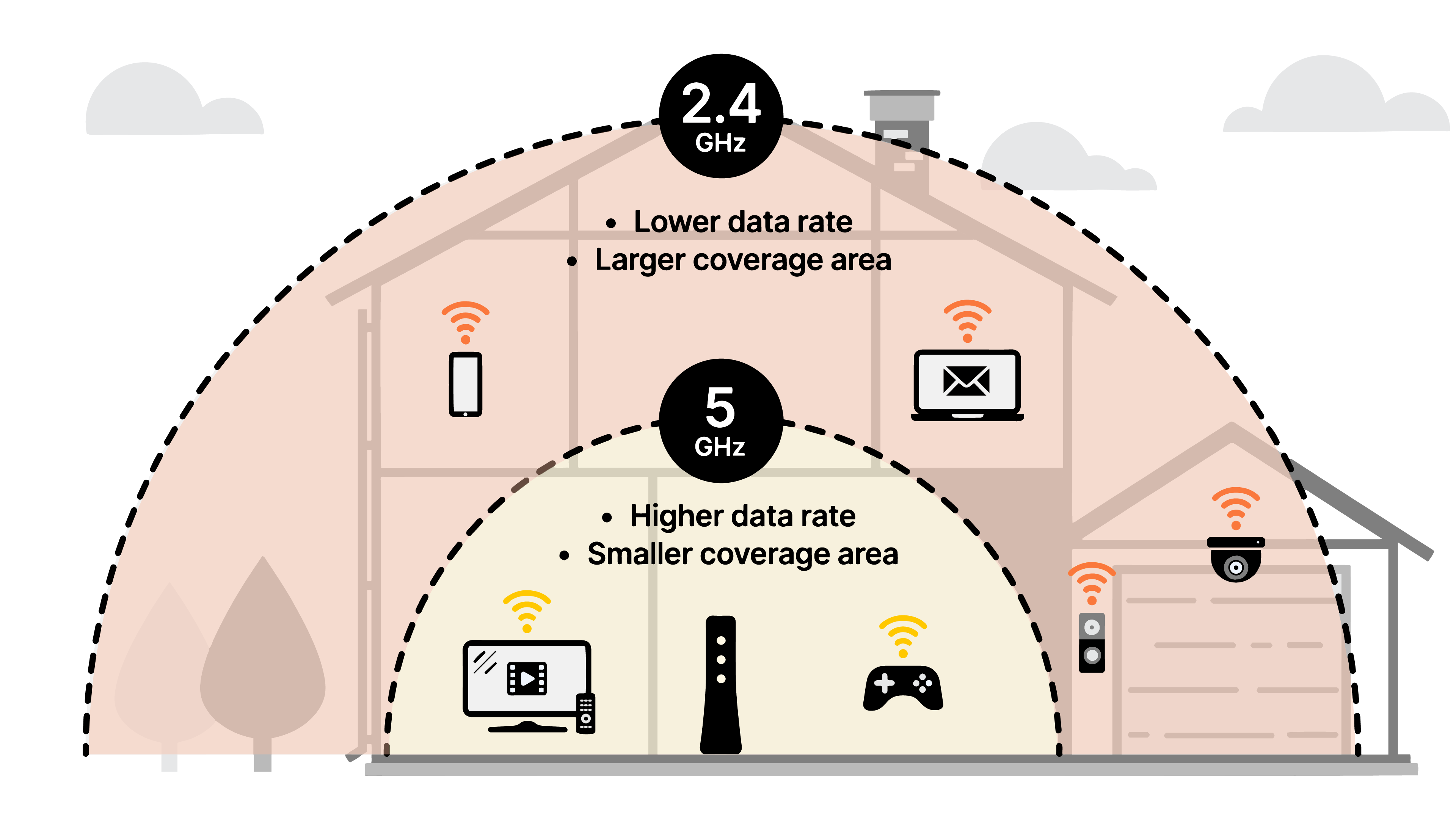All about fiber speed
To get the best possible speed and performance from your Brightspeed Fiber service, we strongly recommend using the gateway (modem/router unit) that we provide. Learn more about using your own router.
Read on to learn how to optimize your WiFi performance, and what kinds of things can impact your speed.
All speed plans indicate the maximum bandwidth you will get from our network to your modem. Depending on where you live, speed packages include 200 Mbps, 500 Mbps, and 1 GB.
Connecting over WiFi results in a slower data speed than a wired connection. Internet speeds are not guaranteed due to conditions outside of network control, including your location, type and age of devices, other equipment used, and use of a wireless connection. See our internet policy for more information.
Many factors inside your home or business space can affect your Brightspeed Fiber service and influence the real-world speed you get at any given time. These factors include your devices, your connection, and the larger network.

Devices – No matter how fast your internet connection is, each device has its own speed limit—the maximum speed at which it can deliver and receive data over the internet. Connected devices include laptops, tablets, gaming consoles, smartphones, and smart devices such as TVs, Alexa, Google Home®, Amazon Echo®, and others. In some cases, the speed of each device may not be as fast as your service speed, especially when you are running at gigabit speeds. For example, if your laptop only supports 100 Mbps, it will not be able to reach the maximum Brightspeed speed.
Other things that can impact the speed at which data is transferred include processor type, operating system, browser version, security firewalls, and anti-virus software.

Number of devices – When multiple devices are connected to your network, either wired or over WiFi, they will share the internet connection. Each one takes a portion of your available bandwidth, which then affects the speed you can get on each device. Multi-gig plans get around this issue by providing such massive bandwidth that you can connect unlimited devices without sacrificing speed on any of them.

Distance from WiFi gateway to devices – The farther a device is from your WiFi gateway (modem/router), and the more obstructions (walls, floors, etc.) between them, the slower the real-world speed will be. You will get the best WiFi signal closest to your gateway with fewer devices running.
Other WiFi networks – Multiple WiFi networks working in close proximity can cause signal interference and performance issues.
Other websites and networks you visit – Even though you purchased a specific internet speed through Brightspeed, other websites you visit may not provide their services at the same speed. As you stream and surf the internet, consider the following:
- The server capacity of each website or content provider can impact speed performance.
- Website and platform owners may pass content through other internet providers on its way to you, which can impact your end speed.
- Visiting some websites or platforms during peak hours can lead to slower performance and lags.
- To optimize your WiFi network, follow the recommended setup and placement instructions for your Brightspeed wireless-enabled router.
- Place the WiFi-enabled Brightspeed gateway (modem/router) in a centralized location within the residence to maximize the coverage and away from any devices that generate signal frequencies (such as microwave ovens, etc.).
- Ensure the router has an unobstructed path to where most of the devices will be operating.
- Minimize the number of devices connected to the gateway and turn off any devices that are not in use.
- Connect using the 5 GHz WiFi frequency whenever possible for higher speeds.

Was this page helpful?
Brightspeed services support
.png)



